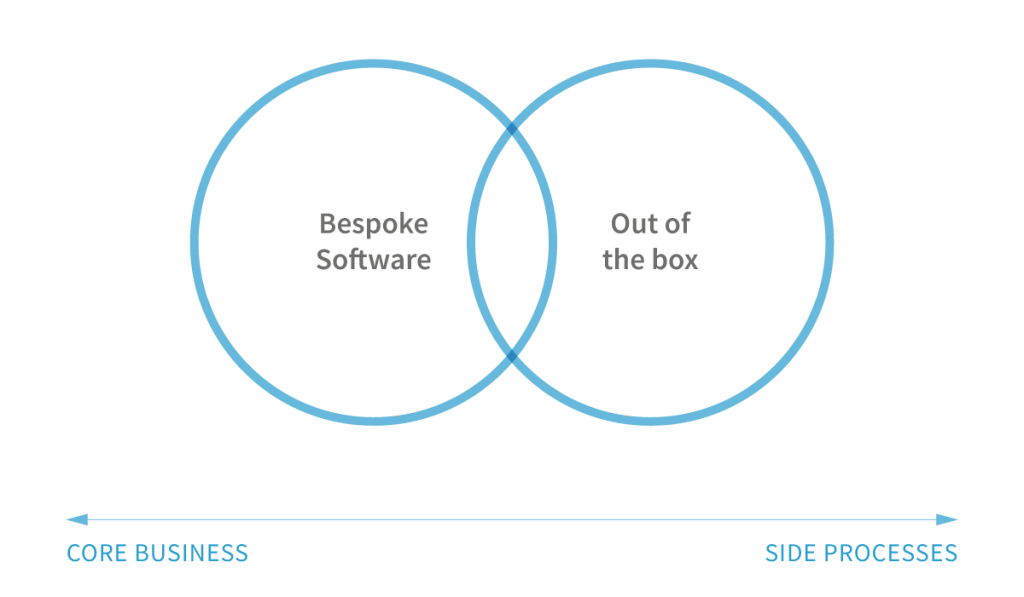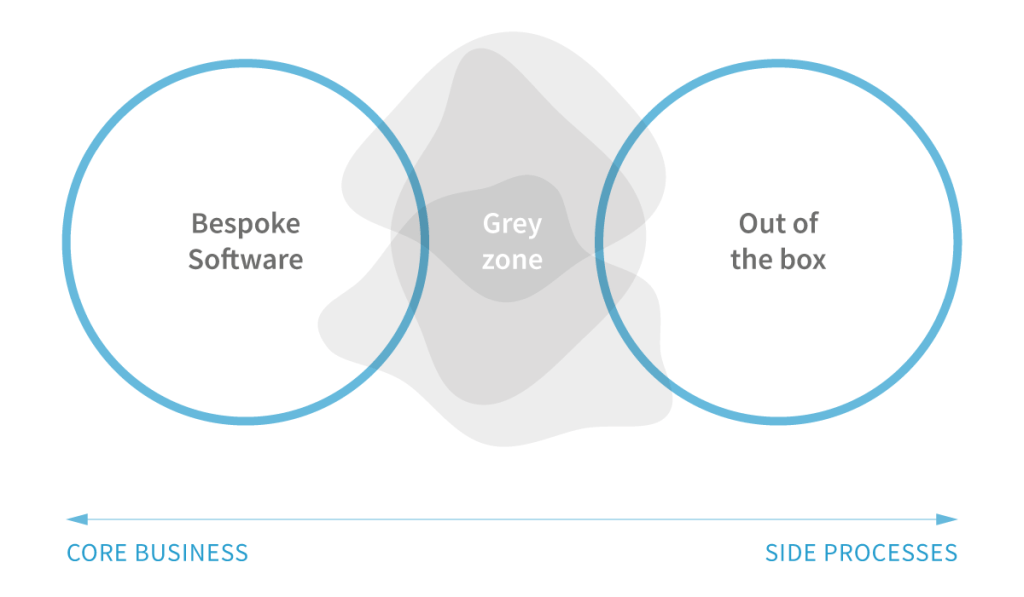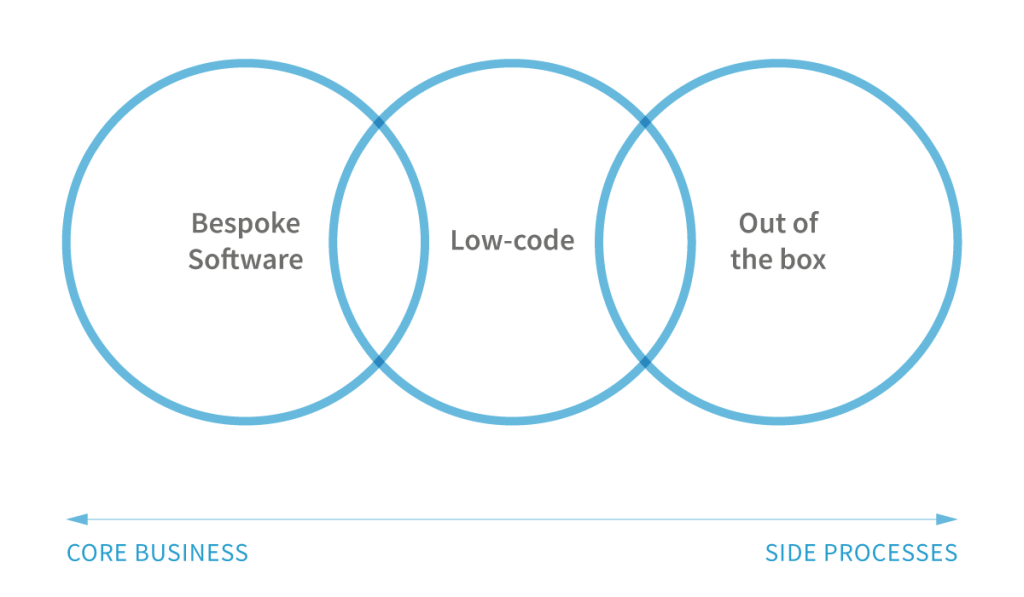There are some producers of low code platforms promising that with their tool you can build almost everything in nearly every situation. That’s an overpromise. And it’s toxic. I spoke to many CIO’s who had believed in such a message and were disappointed by reality they experienced afterwards.
My experience is that low code is not going to flood the entire IT market. It has its own role, hand in hand with bespoke software and out-of-the-box products.
Large organizations
Formerly, there was a golden rule for the IT landscape of large organizations to implement fully tailored solutions to support core business and to rely on out-of-the-box products in all areas of support. In effect, an organization could fully invest in custom development within the area that would differentiate it from the competition and bring the greatest added value. At the same time the company benefited from more affordable prices and business knowledge embedded in out-of-the-box products.

Sounds perfect, doesn’t it? But it is just a theory.
Real life is not so black and white, but it comes in all shades of grey. When looking at large organizations, they have one thing in common – they tend to be unique, to differentiate. Since it’s a natural thing for IT to support that in core business activities, it becomes a problem in all surrounding areas. Besides the most generic processes, organizations can hardly fit into stiff boundaries of out-of-the-box IT products. On the other hand, investing into custom development there, is not reasonable and could weaken focus on core processes. In consequence too many companies make painful tradeoffs adjusting processes to boxed IT products or bypass the gaps by manual processes based on MS Excel or even paper and pencil.

And that’s a place where low-code steps in.
Low-code platforms seem to be perfect cure for the problem described above. They allow to implement IT solutions much faster and cheaper in comparison to custom development and bring full flexibility in processes implementation. At the same time, boundaries of low-code are acceptable in non-core business areas. Moreover, an organization can still benefit from business knowledge provided within boxed products, as low-code tools can integrate with them.

There are many processes in the organization, that can be covered by low-code. Just to give handful of examples for inspiration:
- Finance: Budgeting. Theoretically the task is dead simple. To estimate costs and revenue for the next year. But in practice, to achieve such two numbers is highly personal and reflects the culture of the organization. Historical data analysis, collecting data from departments, acceptance process – there are countless variations of such factors,
- HR: Days-off & presence monitoring. From the legal perspective there is nothing to do. Just a pool of days-off to be planned and accepted by superiors. But every organization has its own habits around it. Strict or flexible working hours, compensation for overtime, business trips etc. And COVID made it even more complex with requirement to manage time spent at home office. How many companies, so many approaches,
- ERP: Production processes. In many cases production companies have specific processes around manufacturing of the product. And more the product is a niche one, the more specific processes are required,
- Sales: Prospecting. Almost every organization has a CRM solution implemented. But it tends to be treated just as a customer registry, “a notepad” for historical activities. Often, it’s because of specific processes around prospecting and customer service that are not covered by out-of-the-box functionality,
- IT: Integration. Since an organization has a chance to cover most of its needs by boxed IT solutions, they may still be monoliths not communicating with their environment. Low-code can play a role of a “glue” between them and provide connectors to external data sources.
SMEs
When switching to SME world, the situation is simpler but not necessarily easier. Besides tech startups (Fintechs, Lendtechs, Insurtechs and other x-techs), such companies cannot afford to have bespoke solutions for their processes and must rely on out-of-the-box software. In consequence it may lead to situation when even core processes are covered manually or by some separated pieces of software.
And here, added value of low-code can be even greater than in case of large enterprises. LCDPs may bring a degree of flexibility and customization that is unavailable in any other scenario.
Summary
Obviously low-code cannot cover all cases in the IT landscape of an organization, but used wisely, it can be a strong complement for bespoke or ready-made software.
That’s not all, however. Low-code platforms vary from each other, so there is not one perfect for all needs. How to choose the right platform for a specific company is yet another story.




